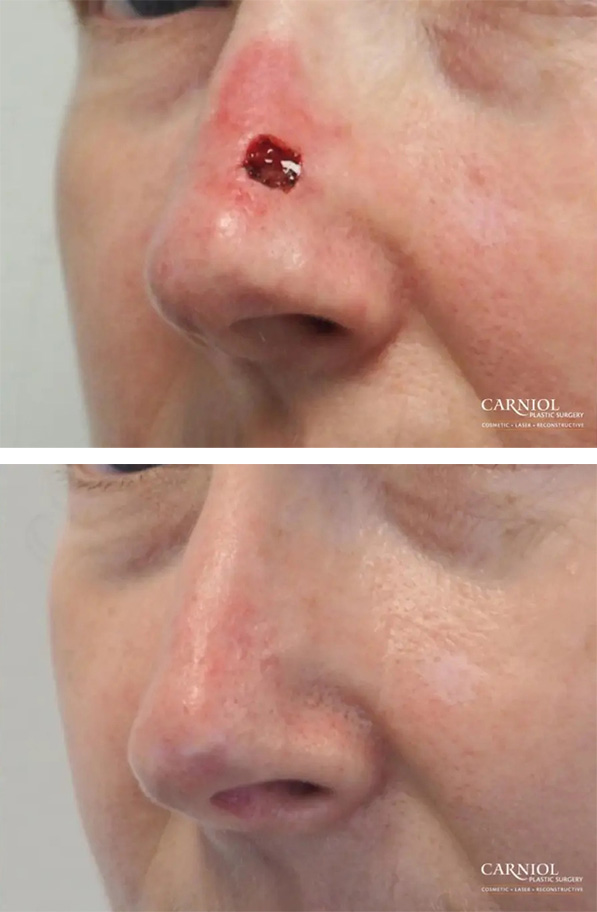Skin Cancer Treatment

Restoring Health and Beauty
Sometimes a spot on the skin begins to change color, bleeds, does not heal, or sticks out more than it did before. A skin expert can take a biopsy to figure out if it is skin cancer. At this point, you want the spot gone, and you want the scar from that surgery to be as invisible as possible. Dr. Eric Carniol and Dr. Paul Carniol have a special interest in skin cancer reconstruction, and restoring your youthful appearance.
Custom Approach to Mohs Skin Cancer Reconstruction
Dr. Eric Carniol and Dr. Paul Carniol have extensive expertise in performing Mohs skin cancer reconstruction procedures. We understand the physical and emotional impact of skin cancer and are committed to delivering outstanding results tailored to your unique needs.
Our approach combines advanced surgical techniques, meticulous attention to detail, and a patient-centered approach to ensure the best possible outcomes. Almost all of the procedures are performed in the office, with many patients driving home themselves.
Treatment Options for Mohs Skin Cancer Reconstruction
Flap Reconstruction
Flap reconstruction involves using nearby healthy tissue to repair the wound left after Mohs surgery. The flap is carefully moved to cover the area, preserving blood supply and ensuring optimal healing. This technique is particularly effective for small & larger defects.
Skin Grafting
Skin grafting is a technique that involves transferring healthy skin from one part of the body (donor site) to the surgical site. Typically we use skin from in front of or behind the ear or above the collar bone. This procedure is suitable for both small and larger defects, especially when a local flap is not able to completely close the area.
Structural grafting
Especially when skin cancer is on the nose or ear, there can be involvement of the deeper structure. Dr. Carniol can use cartilage to help restore the strength and appearance that was there before surgery.
Secondary Intention
This is when an area is allowed to heal without an advanced closure technique. There are certain advantages to this technique depending on the area of the face or neck.
Skin Cancer Scar Revision
Even the best surgeries can have scars that turn out not the way we wanted. Dr. Paul Carniol and Dr. Eric Carniol enjoy treating skin cancer scar consult patients and maximizing their appearance. Scar revision options include laser treatments, rearranging the scar shape, and scar injections. Improving scars brings tremendous joy to the doctors and staff at Carniol Plastic Surgery because they understand that these scars carry such emotional burden.

“I received wonderful care from Dr. Carniol and his warm and attentive staff. Dr. Carniol did an excellent job after my Mohs surgery for skin cancer where many friends and family said they couldn’t even tell I had had stitches. I received excellent care throughout the process. I highly recommend Dr. Carniol and his team.”
• Denise
